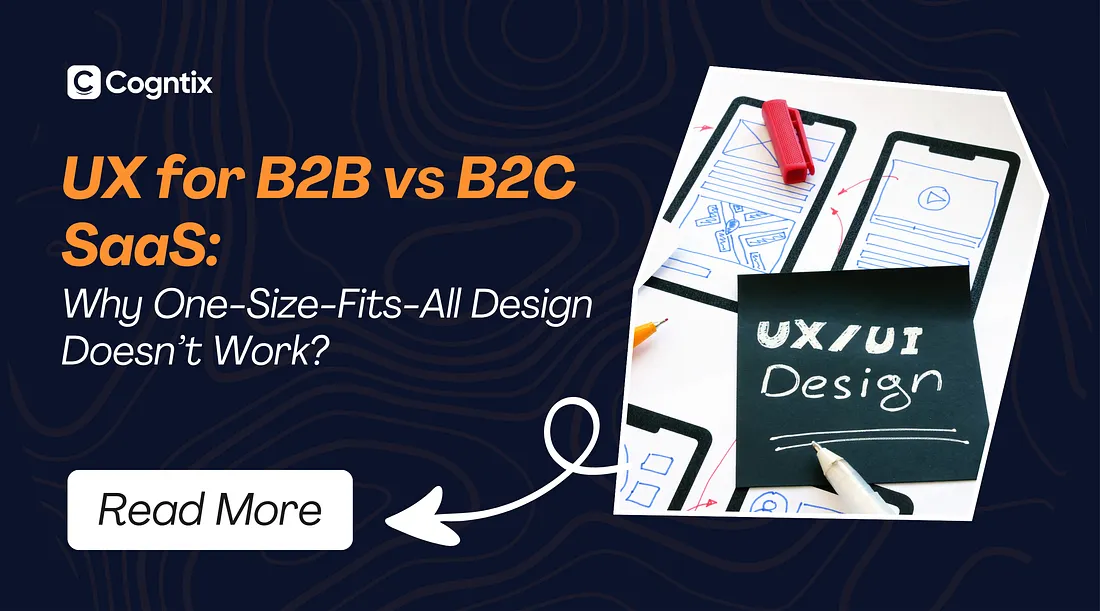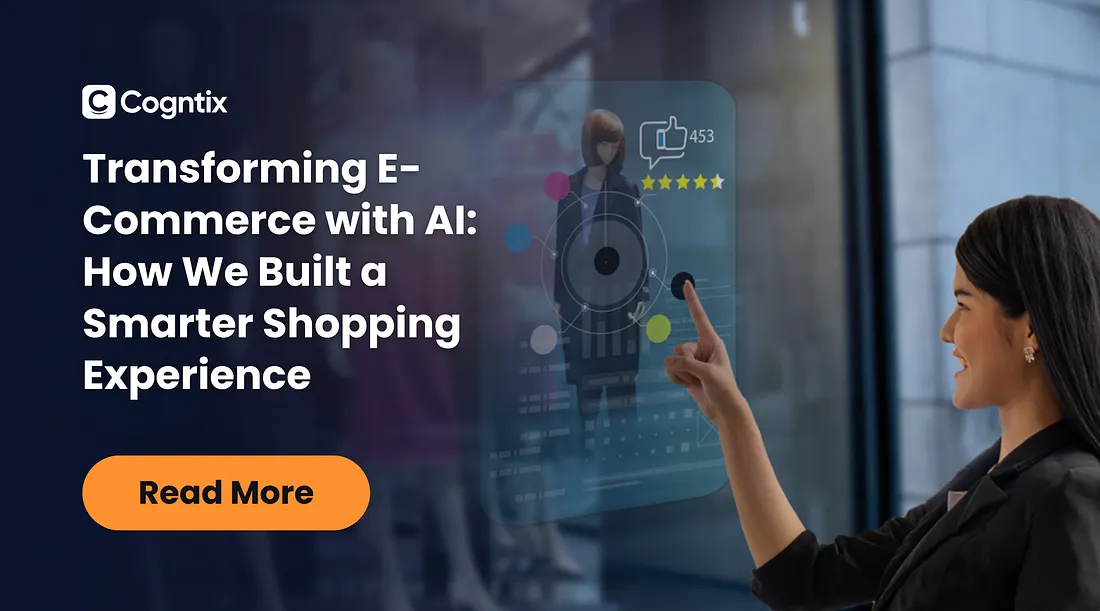As a tech agency focused on delivering tailored solutions, Cogntix has seen firsthand how crucial it is to get user experience (UX) right. When it comes to Software-as-a-Service (SaaS), it’s often easy to assume that a one-size-fits-all design can work across different industries.
But when it comes to B2B (Business-to-Business) versus B2C (Business-to-Consumer) SaaS, this assumption is far from accurate. The UX needs for these two sectors vary drastically, and understanding these differences can make all the difference between retaining customers or losing them to competitors.
The Core of the Problem: Different Users, Different Needs
At its core, UX for B2B and B2C SaaS is about understanding the specific goals, behaviors, and pain points of your users. For instance, while B2C SaaS products are designed for individuals looking for a fast, intuitive experience with minimal friction, B2B SaaS platforms need to cater to more complex, multifaceted tasks.
B2B users often need software to address specific business challenges. Whether it’s CRM tools, data analytics, or project management solutions, the UX must prioritize functionality and collaboration. B2C, on the other hand, is more about delivering immediate value and user engagement with smooth. consumer-friendly interfaces.
If you’re designing for both, assuming that the same design principles can apply across the board will only frustrate users and hurt conversion rates. Here’s why:
1. Complexity vs. Simplicity: One Size Doesn’t Fit All
B2B SaaS is often designed for teams or whole companies, where multiple stakeholders with varying levels of tech-savviness interact with the platform. This means the design must be scalable and allow for customization.
On the other hand, B2C SaaS products cater to individuals who generally need a more straightforward experience. An e-commerce platform or fitness app is designed to be easy to use and navigate within seconds. B2C UX design focuses heavily on personalization, intuitive interfaces, and quick access to features.
Take the example of a project management tool. A B2B SaaS solution like Asana or Trello can’t just focus on flashy, surface-level features. They need deep integrations, team-based tools, and reports. A B2C SaaS like Google Keep, however, is about simplicity. The user expects fast access to note-taking, reminders, and the option to collaborate without needing extensive setup or learning.
2. Speed vs. Functionality: Why the Experience Varies
For B2C, users demand speed and a frictionless experience. They may not have the patience to work through complex onboarding steps or deal with slow load times. If they don’t find what they need quickly, they will abandon the app and look elsewhere.
But B2B SaaS users are often willing to sacrifice a bit of speed for a higher degree of functionality. After all, these tools often help solve specific business problems. Whether it’s marketing automation, finance management, or HR systems, the end-user in B2B SaaS is often looking for precision over speed.
Imagine a data analytics platform. For a B2B SaaS platform, the user may need detailed reports, granular filters, and visualizations. For a B2C SaaS, however, it’s all about speed. Users expect to click a button and instantly see results, not wait for complex calculations.
3. Personalization in Retaining Customers
In B2B SaaS, customization is essential. Every business is unique, so offering a UX that adapts to the specific needs of a company’s workflow is crucial for retention. For example, enterprise solutions like Salesforce or Microsoft Dynamics allow for deep customization, from layout preferences to integrating unique business tools. The UX must evolve with the company’s needs.
How Cogntix Ensures Success in Both B2B and B2C SaaS Design?
At Cogntix, we recognize that the user experience (UX) design for B2B and B2C SaaS products is not the same. A one-size-fits-all design approach simply doesn’t cut it. Whether you’re catering to large businesses or individual consumers, each requires a tailored UX that addresses their unique needs and behaviors.
For B2B SaaS, the focus is on scalability, complex workflows, and multi-user management. These solutions need to be functional, efficient, and capable of supporting integrations with third-party tools. In contrast, B2C designs prioritize speed, ease of use, and seamless onboarding to keep users engaged from the start.
Want to improve your SaaS product’s UX? Let’s discuss how we can help design a user experience that works for your target audience.
Written by: Gayathri Priya Krishnaram (Digital Content Writer at Cogntix)




